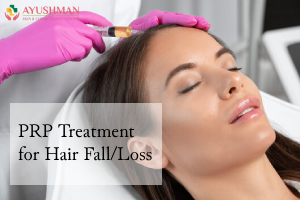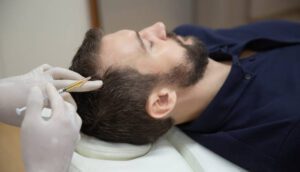PRP HAIR TREATMENT
PRP Treatment in Dwarka, Delhi is a non-surgical procedure that aims to promote hair growth and improve the thickness and quality of hair. It involves the use of the patient’s own blood, specifically the plasma component, which is rich in platelets and growth factors. The platelets and growth factors in PRP are believed to stimulate hair follicles, promote blood flow, and encourage new hair growth. They may also help prolong the growth phase of the hair cycle and improve the overall health and thickness of existing hair.

The Process Of PRP Hair Treatment?
Here are the steps of PRP treatment
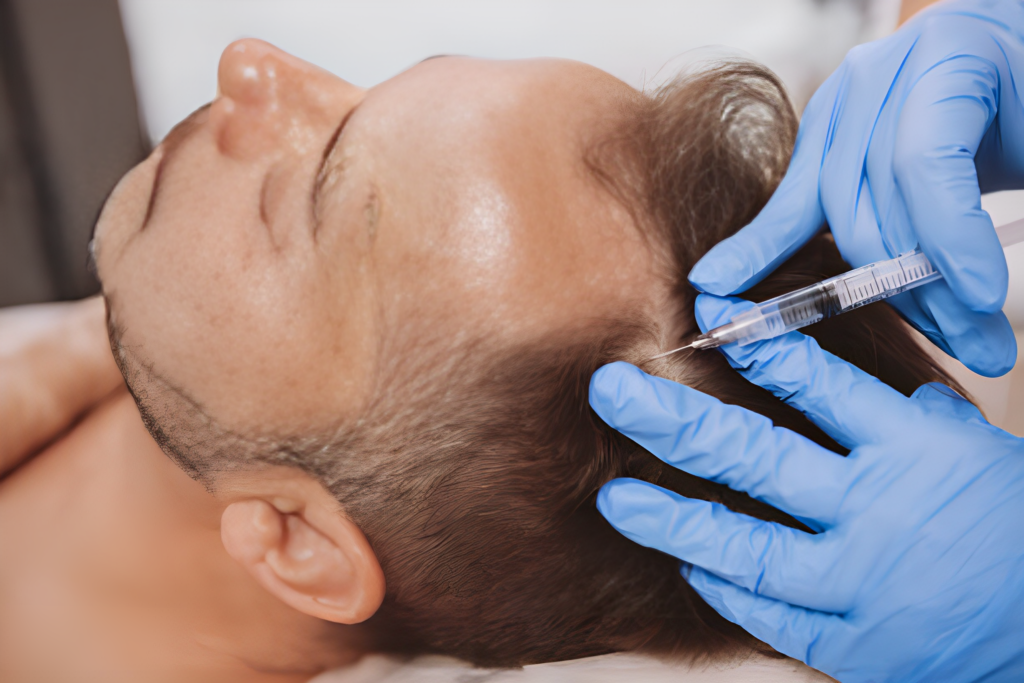
Step 1: Consultation
The PRP treatment journey begins with a consultation with a qualified healthcare professional or a trained specialist. During a consultation, your current health status and medical history are assessed to determine if PRP treatment is a suitable option for you. It’s important to discuss with experts about your potential risks, expectations, and the number of sessions needed for optimal results.
Step 2: Blood Draw
The next step of the PRP process involves drawing a small amount of your blood, typically from your arm. This blood is processed in a centrifuge machine which separates the components and concentrates the platelets needed for the treatment.
Step 3: Centrifugation
The drawn blood is placed in a specialized centrifuge that spins at high speeds. This process isolates the platelets and growth factors from other blood components. The result is a concentrated PRP solution rich in proteins and bioactive substances that promote tissue regeneration.
Step 4: Scalp Preparation
Before the PRP is applied, your scalp is thoroughly cleaned to ensure a sterile environment for the treatment. In some cases, a local anesthetic may be applied to minimize discomfort during the procedure.
Step 5: PRP Injection
With the concentrated PRP solution ready, the specialist uses fine needles to inject it directly into targeted areas of your scalp where hair loss or thinning is evident. The growth factors in PRP work to stimulate dormant hair follicles, promoting hair regrowth and improving hair thickness.
Step 6: Recovery and Post-Treatment Care
Following the PRP hair treatment, there might be some temporary mild swelling or redness at the injection sites. Your specialist will provide post-treatment care instructions, including avoiding strenuous activities, excessive sun exposure, or certain hair care products for a specified period.
Step 7: Follow-up Sessions
PRP hair treatment is often a series of sessions spaced several weeks apart. The number of sessions varies depending on individual factors, and your healthcare provider will advise on the ideal schedule for your specific case. Consistency in attending follow-up sessions is crucial for optimal results.
Uses Of PRP Hair Treatment?
Androgenetic Alopecia
The most common cause of hair loss in both women and men is androgenetic alopecia. PRP treatment has shown positive results in treating this condition. The growth factors in PRP stimulate dormant hair follicles and promote the regrowth of healthier hair.
Alopecia Areata
This condition is an autoimmune condition that causes hair loss in patches. PRP may help stimulate regrowth for people with alopecia areata. Although results may vary, some studies suggest improvement in hair thickness and density.
Volume Loss and Hair Thinning
PRP hair treatment can be beneficial for those people who experiencing general hair thinning or a decrease in hair volume. PRP contributes to improving hair thickness and texture by encouraging blood supply and hair follicle activity.
Improving Hair Health
PRP can be utilized to maintain overall hair health even for people who don’t experience significant hair loss. It nourishes existing hair follicles, preventing further thinning and promoting a healthier appearance.
Benefits Of PRP Hair Treatment
PRP hair treatment is one of the best procedures for hair loss. Here are some benefits:
Quick Procedure:
PRP sessions are usually quick, often taking less than an hour, making it a convenient option for individuals with busy schedules.
Reduces Hair Loss:
PRP may help reduce hair loss by strengthening existing hair and preventing further shedding.
Natural and Autologous:
Since PRP uses the patient's blood, the treatment is considered safe and minimizes the risk of allergic reactions or rejection.
Improves Hair Quality
Besides promoting growth, PRP can enhance the overall quality of hair, making it shinier and healthier.
Non-Surgical:
PRP is a non-surgical procedure, making it a less invasive option compared to some other hair restoration methods.
Hair Transformation before after PRP Hair Treatment
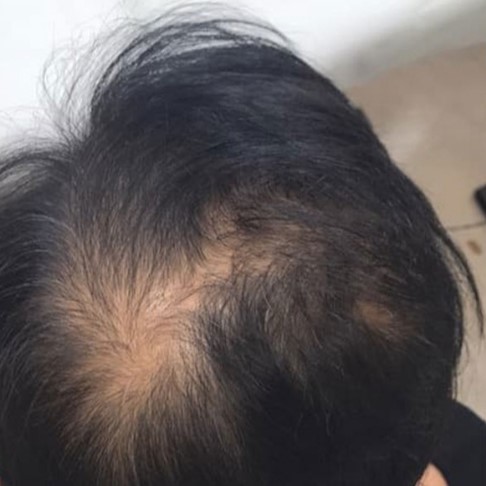
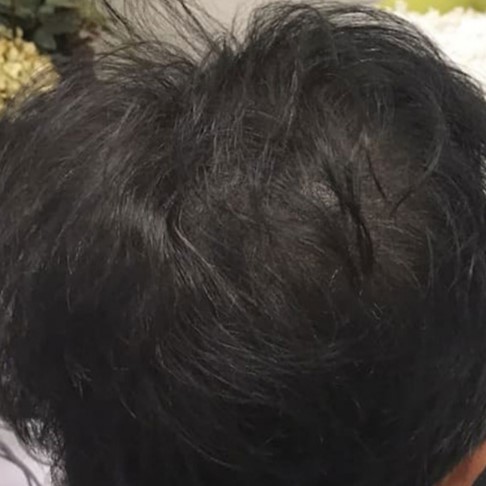
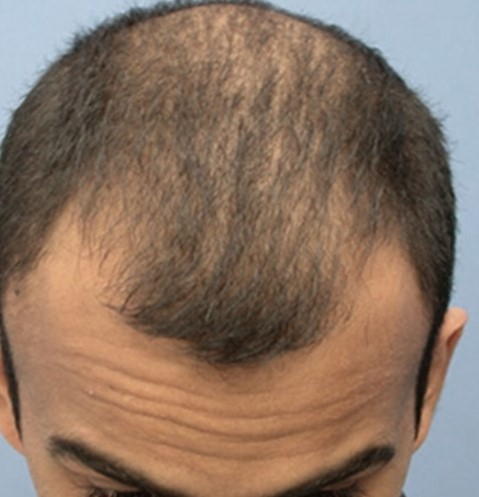
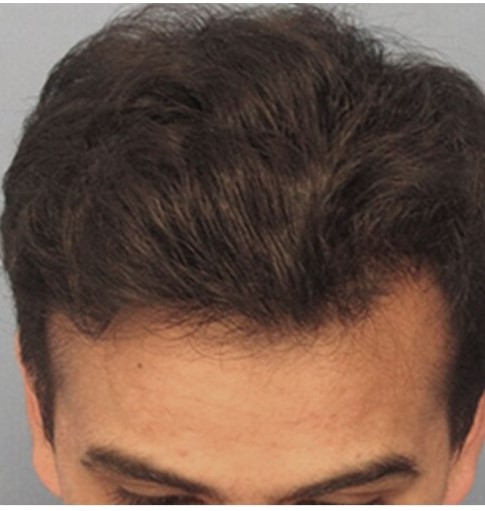
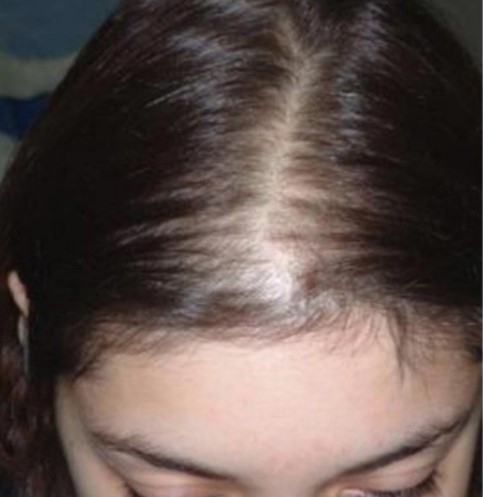
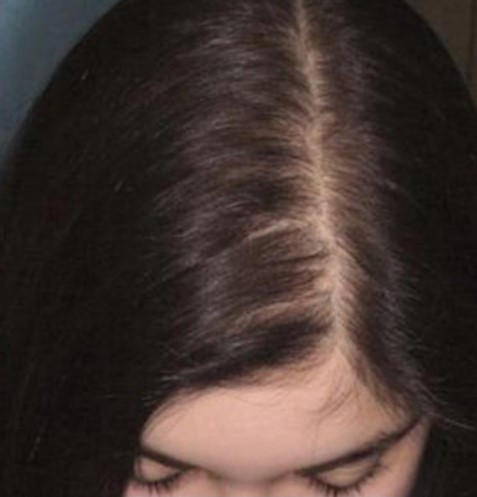
Our Happy Customers



FAQ
Is prp treatment safe?
PRP injections are safe since they employ a patient’s own tissues and can be used alone or in conjunction with other procedures.
Is prp hair treatment painful?
The treatment is relatively painless, with no downtime.
Are there any side effects of prp therapy?
Because PRP injections use a person’s own platelets, patients seldom suffer adverse reactions to the injections. However, they may feel discomfort, pain, or bleeding at or near the injection site.
Does it effective on balding areas?
Where there is already thinning hair, it works best.
Does prp treatment thicken hair?
PRP injections can assist strengthen blood vessels surrounding the hair follicle, resulting in thicker hair during the anagen phase.
How Much Does PRP Treatment Cost In Delhi?
Where can I find PRP hair treatment in Dwarka?
You can find PRP hair treatment conveniently near you at Ayushman Skin & Cosmetology, located in Dwarka, Delhi.
Where can I find plasma hair treatment near me?
You can find top-quality plasma hair treatment conveniently near you at Ayushman Skin & Cosmetology, located in Dwarka, Delhi

Read Our Blogs
PRP Treatment for Hair Fall & Loss in Delhi
PRP Treatment Cost in Delhi Blood comprises three main cell types: red blood cells, white blood cells, and platelets. Platelet-rich…
Hair PRP Treatment Cost in Delhi
Hair loss is a common concern for both men and women. While traditional solutions like medications and transplants exist, PRP…
PRP Injections | PRP Hair Loss Treatment In Dwarka
We lose 50 to 100 hairs per day, which is normal and usually not noticeable because our hair is replaced…


